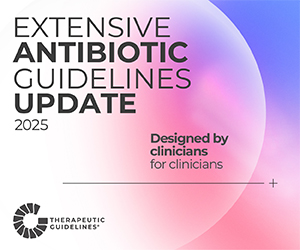One of the most common infections occurring in hospitals are urinary tract infections, with approximately 1% of admitted patients acquiring this infection in Australia- or 71,000 cases per year (Mitchell et al. 2016; Mitchell et al. 2017).
A large proportion of these are associated with the insertion, care and or maintenance of urinary catheters – also referred to as catheter associated urinary tract infections (CAUTIs).
Urinary catheter use is also very common, with 25% of patients in an Australian hospital on any given day having a urinary catheter (Gardner et al. 2014).
Strategies to prevent CAUTI are therefore important, not only because of their frequency, but also because:
- they contribute to an increased length of stay in hospital (Mitchell et al. 2016);
- treatment is and will continue to become more difficult, with increasing antimicrobial resistance (Fasugba et al. 2015; Fasugba et al. 2016); and
- the incidence of CAUTI can be reduced through a program of work (Saint et al. 2016).
There are some elements of catheter care where the evidence is less clear. Cleaning the meatal area prior to urinary catheter insertion is an important step in the insertion process, but which agent is most appropriate- saline or chlorhexidine?
The evidence base to answer this question is unclear, as evidenced in a systematic review (Fasugba et al. 2016).
This gap in evidence has led to different recommendations in guidelines, hospital policies and clinical practice.
To address this question, we undertook a stepped wedge randomised control study in three Australian hospitals.
The aim of the study was to determine the effectiveness and cost-effectiveness of chlorhexidine 0.1% (sterile) solution, compared to normal saline. Full details of the study approach taken have been published (Mitchell et al. 2017).
In this study, all hospitalised patients who received a urinary catheter received either saline (control) or chlorhexidine (intervention) for meatal cleaning as part of catheter insertion practice.
The primary outcomes for the study were the incidence of CAUTI and catheter associated asymptomatic bacteriuria (CA-ASB) and the cost-effectiveness of the intervention (Mitchell et al. 2017).
After the introduction of chlorhexidine, we identified a 94% reduction in the incidence of CAUTI (0·06, 0·01–0·32; p=0·0008) and a 72% reduction in the incidence of CAASB (IRR 0·26, 95% CI 0·08–0·86; p=0·026) (Fasugba, 2019).
Using cost-effectiveness analysis, we then modelled the changes in health cost associated with the introduction of chlorhexidine (ie. switching from saline).
A switch to chlorhexidine was found to be cost-effective and cost saving.
On average, the use of chlorhexidine was estimated to save hospitals AUD$387,909 per 100,000 catherisations and release valuable bed days as a result of a reduction in infection.
Full results on the cost-effectiveness analysis have been published (Mitchell et al. 2019).
There were no reported adverse events in patients who received chlorhexidine.
All three hospitals (large public hospital, a large private hospital and a regional hospital) saw reductions in both CAUTI and CA-ASB following the introduction of chlorhexidine. Furthermore, even after the additional cost of using chlorhexidine (compared to saline) and using conservative estimates (we only modelled the effect on CAUTI), the switch to chlorhexidine was cost effective and cost saving.
If reductions in CA-ASB were also included in our cost effectiveness model, further cost savings and benefits, would be expected, through a reduction in antimicrobial consumption.
In the era of antimicrobial resistance, any reduction in antimicrobial use should also be welcomed.
Potential limitations in our study include a Hawthorne effect*.
This is potentially mitigated by any communication with staff just focussing on a change of product.
In addition, we saw a reduction in infection both CAUTI and CA-ASB in all three hospitals, immediately after the intervention commenced.
The nature of the stepped wedge design also meant that the timing of the intervention was staggered and potential confounders such as case-mix are controlled.
There is now high quality evidence suggesting that hospitals and health services should modify their guidelines, to reflect the use of chlorhexidine for meatal cleaning, prior to urinary catheter insertion.
Funding: The study was supported by grant from the HCF Foundation.
Study team: Professor Brett Mitchell, Dr Oyebola Fasugba, Professor Allen C Cheng, Victoria Gregory, Professor Nicholas Graves, Dr Jane Koerner, Professor Peter Collignon and Dr Anne Gardner.
* The Hawthorne effect refers to a phenomenon in which participants alter their behaviour as a result of being part of an experiment or study.
Author
Brett G Mitchell is a Professor of Nursing at the School of Nursing and Midwifery, University of Newcastle, New South Wales. He is also Editor-in-Chief of Infection, Disease and Health an international peer reviewed journal. He was the Chair of an NHMRC committee producing the 2019 national infection control guidelines. He has many interests in infection control, including environmental cleaning, surveillance and urinary tract infections. Brett has worked in a diverse range of areas including senior nursing positions in Australia and the United Kingdom, both in public health and within hospitals. He has undertaken consultancy work for the government and private sector and worked in developing countries.








